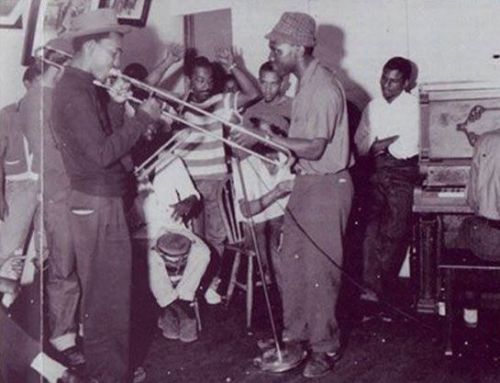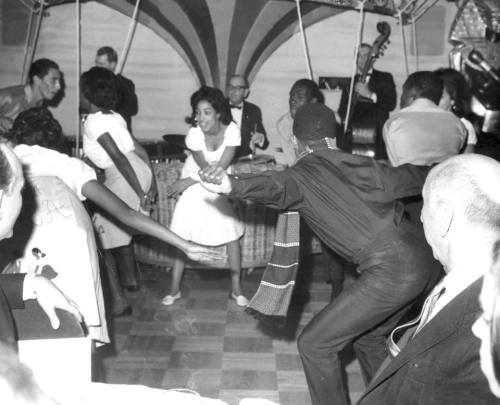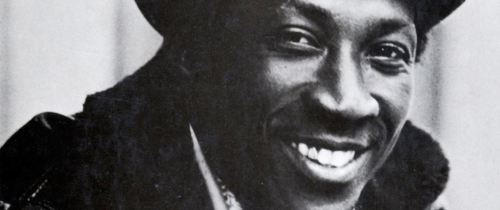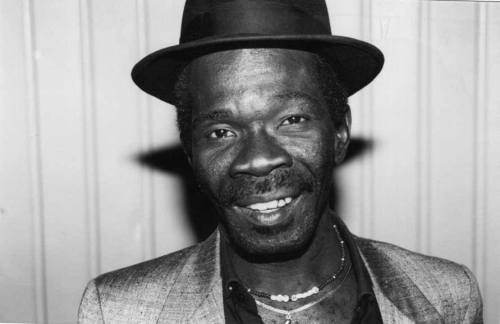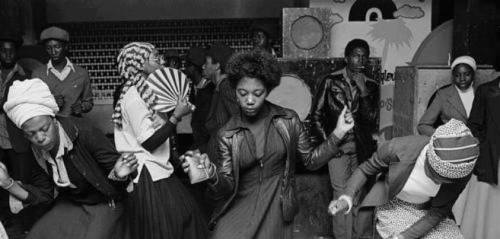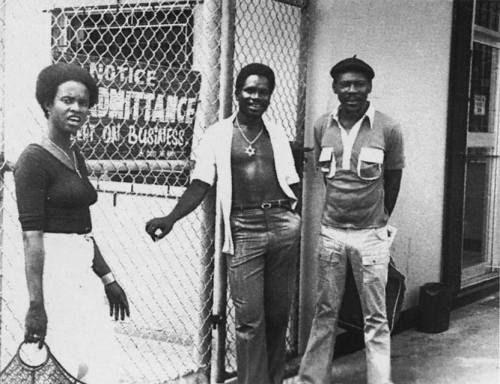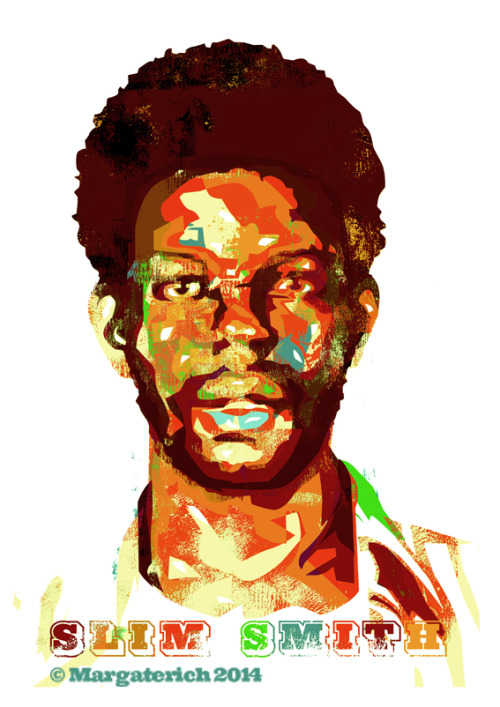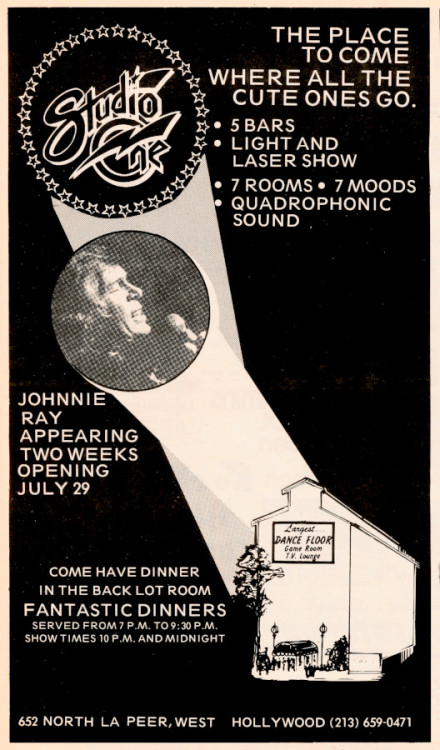#studio one
Ad for Studio One(652 N. La Peer, West Hollywood, CA).
There’s quite a bit about Studio One out there, one of LA’s pre-eminient disco venues. However, the venue’s legacy these days is tainted by accounts of its racist door policies, which had been the subject of community protest, multiple times.
According to the ONE Archives page on Studio One, “[t]hree pieces of identification were required before even being admitted to the club and that was only if diversity quota has not been met for the night. Women and minorities were turned away from the door while white males were always admitted.”
Regarding this particular ad, I was intrigued by the advertisement for Johnnie Ray’s appearance there, likely at its popular cabaret venue, The Backlot. Someone I hadn’t known of until I saw this ad, Johnnie Ray is an interesting figure in queer pop cultural history. Hearing impaired from a young age, Ray was something of a Rock & Roll pioneer, having come up playing black establishments like Detroit’s Flame Show Bar, where he was known for his emotive, theatrical style. Though never ‘out’ in the quasi-official way we think of today, his queerness remains widely acknowledged. If nothing else, signature songs like “Cry” and “Hernando’s Hideaway” certainly speak to decidedly queer themes and audiences. Battling alcoholism throughout much of his adult life, Johnnie Ray died of liver failure in 1990 at the age of 63.
Post link

